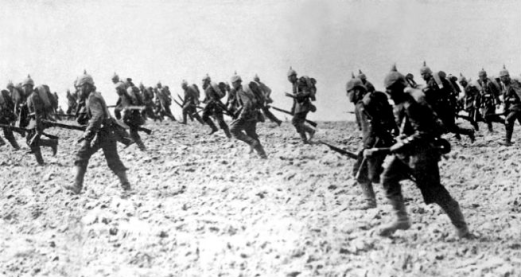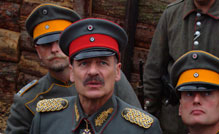The July Crisis of 1914 describes the chain reaction of events that led to the outbreak of war in Europe. The timeline below lays out each event, with links to some individual articles where you can read in more detail.
-
The assassination of Archduke Franz Ferdinand and his wife in Sarajevo in Bosnia. The image on the right is the front page of the New York Times from the following day. Select to view a larger version.
-
Austro-Hungarian envoy Count Hoyos, pictured right, travels to Berlin to establish level of German support for Austrian action against Serbia. Kaiser Wilhelm II and Chancellor Theobald von Bethmann Hollweg encourage Austrian action and Germany issues ‘blank cheque’, promising unconditional support to their ally.
-
Austro-Hungarian Ministerial Council convenes and decides on (deliberately unacceptable) ultimatum to Serbia to initiate military action or Serbia’s humiliation. (Later decision to delay delivery of the ultimatum to coincide with the departure of the French President Poincaré and Prime Minister Viviani from St. Petersburg (scheduled for 23 July).
-
French state visit to Russia (French President and Prime Minister absent from France from 16th to 29th July). The military alliance between the French Third Republic and the Russian Empire ran from 1892 to 1917. On the right, a political cartoon from newspaper Soleil depicts Marianne of France and the Russian Bear embracing. "If I return your love, will I get your coat for winter?"
-
Austria issues ultimatum to Serbia, giving Serbia 48 hours to reply.
-
Serbia replies to the ultimatum, surprisingly meeting almost all demands. Nonetheless, Austria-Hungary breaks off diplomatic relations with Serbia.
-
Britain proposes mediation conference; ignored by Berlin and Vienna. Partial mobilisation of four Russian districts.
-
Austria-Hungary declares war on Serbia. Wilhelm II proposes ‘Halt in Belgrade’.
-
Bethmann Hollweg, pictured right, attempts to restrain Austria-Hungary for the first time during the crisis.
-
Tsar Nicholas II authorizes Russian general mobilization for the next day.
-
Germany declares war on Russia. France and Germany begin general mobilisation.
-
German troops invade Luxembourg as part of its deployment plan. Germany issues ultimatum to Belgium. British cabinet approves protection of French coast and of Belgian neutrality.
-
German troops invade Belgium; Germany’s declaration of war on France. Italy decision to stay neutral announced.
-
Britain declares war on Germany.
-
Austria-Hungary declares war on Russia.
Agreements and relationships between nations in 1914: The Alliance system
This depiction of the Alliance system in 1914 illustrates the perceived ‘encirclement’ of the Triple Alliance, consisting of Germany, Austria-Hungary and Italy, by the Entente Cordiale of France, Russia and Britain.
The Entente Cordiale consisted of a formal alliance between France and Russia, but only an Entente (not a binding alliance) between Britain and France and Russia.
This is important when it comes to the end of July 1914, when France and Russia are desperately waiting for Britain to decide if she will join them in their fight against the Alliance – Britain is not obliged to do so under any alliance treaty.
Next: the way historians have viewed the causes of the First World War has changed in the hundred years since war broke out. Read about the different opinions and positions in The debate on the origins of the First World War
This page is part of our collection about the origins of the First World War.


Rate and Review
Rate this article
Review this article
Log into OpenLearn to leave reviews and join in the conversation.
Article reviews